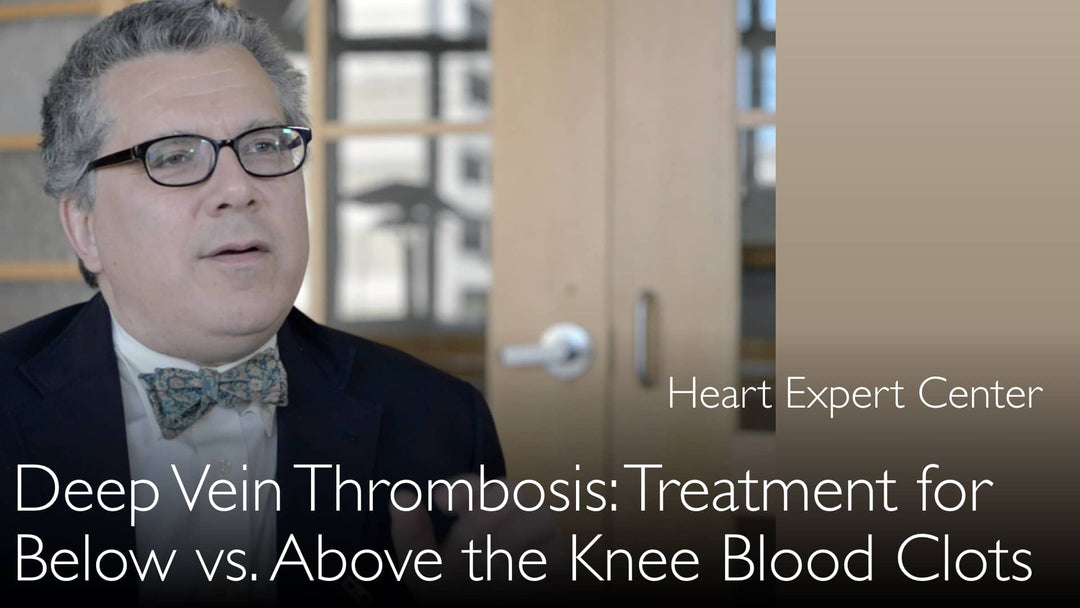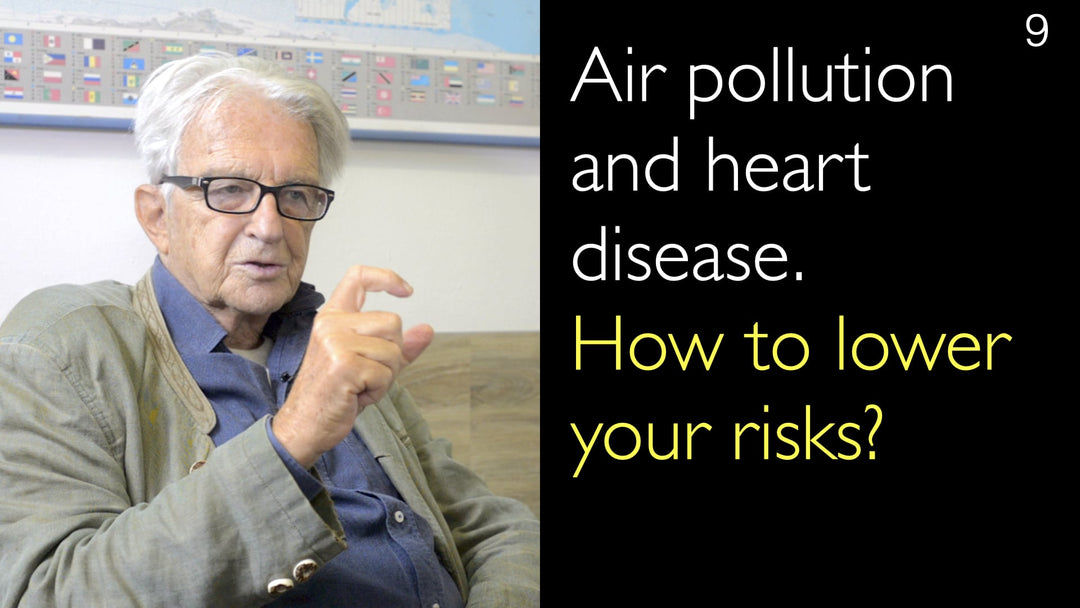Leading expert in vascular imaging, Dr. Kent Yucel, MD, explains the evolving treatment strategies for deep venous thrombosis. He details the clinical debate surrounding blood clots located below the knee. Dr. Yucel clarifies when anticoagulation is the primary therapy. He also discusses the modern role of removable inferior vena cava filters for patients who cannot tolerate blood thinners. This approach helps prevent life-threatening pulmonary embolism.
Deep Vein Thrombosis Treatment: Anticoagulation and IVC Filters
Jump To Section
- Below Knee DVT Treatment Controversy
- Anticoagulation as Primary DVT Therapy
- IVC Filter Indications and Use
- Removable Filter Advantages
- Clot Extension and Pulmonary Embolism Risks
- Full Transcript
Below Knee DVT Treatment Controversy
Treatment for deep venous thrombosis below the knee is a highly debated clinical issue. Dr. Kent Yucel, MD, confirms that medical opinion has shifted significantly over time. The approach has swung from aggressive treatment to observation and back again. The current consensus, as explained by Dr. Yucel, is moving toward a more aggressive treatment stance for these clots.
Anticoagulation as Primary DVT Therapy
The best therapy for deep venous thrombosis is anticoagulation medication. Dr. Anton Titov, MD, and Dr. Kent Yucel, MD, discuss this cornerstone of DVT management. Anticoagulants work to prevent existing clots from growing and new clots from forming. This treatment is effective for clots both above and below the knee when clinically indicated.
IVC Filter Indications and Use
Inferior vena cava filters offer a crucial alternative for patients who cannot receive anticoagulation. Dr. Kent Yucel, MD, notes that a high risk of bleeding is a common contraindication to blood thinners. An IVC filter is a small device placed in the large abdominal vein (the inferior vena cava) that carries blood to the heart and lungs. It functions by catching blood clots before they can travel to the lungs and cause a pulmonary embolism.
Removable Filter Advantages
A major advancement in deep venous thrombosis treatment is the development of removable inferior vena cava filters. Dr. Kent Yucel, MD, highlights how this technology has changed clinical decision-making. Historically, IVC filters were permanent implants, which was a significant commitment for a patient with a temporary condition. Now, these filters can be retrieved once the period of high risk for DVT has passed, making them a more flexible and attractive option.
Clot Extension and Pulmonary Embolism Risks
A key reason to treat below-knee DVT is the risk of clot propagation. Dr. Kent Yucel, MD, explains that while isolated clots in the smaller calf veins pose a lower immediate risk of massive pulmonary embolism, they are not without danger. These clots can grow and extend upward into the larger veins above the knee. Once a clot reaches these larger veins, the potential for a large, life-threatening pulmonary embolism increases substantially, justifying a more proactive treatment approach.
Full Transcript
Treatment of below-the-knee deep venous thrombosis is a hotly debated clinical issue. A leading radiologist discusses the current approach to treating deep venous thrombosis.
Should blood clots below the knee be treated with anticoagulation? What about treatment of blood clots above the knee? How have removable inferior vena cava filters changed therapy of DVT? This radiologist has a special interest in vascular imaging.
Below-knee deep venous thrombosis treatment and above-knee deep venous thrombosis treatment are important topics. How is deep vein thrombosis treated? Deep venous thrombosis treatment is anticoagulation. The decision whether to treat below-the-knee DVT is a very important decision to make.
A crucial decision in treatment of lower extremity deep vein thrombosis is the need to treat blood clots below the knee. Currently, such clots are treated by anticoagulation. Inferior vena cava filters are also used to treat DVT in patients who cannot tolerate anticoagulants.
Medical second opinion is important in all cases of deep venous thrombosis and pulmonary embolism. Medical second opinion ensures that diagnosis is correct and complete. It also helps to choose the best treatment strategy for clots in leg veins.
Seek medical second opinion on venous thromboembolism and be confident that your treatment is the best.
Dr. Anton Titov, MD: When should IVC filter be used to treat DVT? Inferior vena cava filters are used to treat recurrent thrombosis when anticoagulation is not possible. Vena cava filters for venous disease treatment can be removed when risk of DVT decreases or disappears. Now there are removable inferior vena cava filters.
Dr. Anton Titov, MD: How important for treatment decision is the notion that the blood clot from the leg vein might extend beyond the knee area? Does location of blood clot below the knee or extension of clot above the knee alter the treatment of DVT?
Dr. Kent Yucel, MD: That is a controversial area, and the pendulum has swung back and forth over the years. Opinion changed from aggressively treating clots below the knee to ignoring clots below the knee to repeat imaging for clots below the knee.
Now, the consensus is to be more aggressive and go ahead and treat the clots below the knee. Everyone agrees because those veins are much smaller than the veins above the knee. The blood clots, if they travel to the lungs, are much lower risk for massive pulmonary embolism because they are much smaller.
That is the reason that patients have thought maybe it is not worth being worried about deep venous thrombosis below the knee. The problem with clots below the knee is that they can keep growing. They can spread above the knee to the big veins.
For that reason, the developing consensus now is to be more aggressive and go ahead and treat those patients for deep vein thrombosis.
Dr. Anton Titov, MD: And a major treatment remains anticoagulation or filters in the inferior vena cava?
Dr. Kent Yucel, MD: Right. The best therapy for deep venous thrombosis is anticoagulation, if patients can receive it. But there are patients who cannot be anticoagulated for a variety of risk factors. Generally, risk of bleeding is a contraindication to anticoagulation.
Those DVT patients can have filters in their inferior vena cava. It is a big vein in their abdomen that goes to the heart and lungs. It used to be that vena cava filters were permanent devices.
So it was a big decision, especially for a young patient, to leave a permanent device in for a temporary disease. But now inferior vena cava filters can be removed. So there are removable vena cava filters now.
The decision is much easier now because once the problem is over, then vena cava filters can be removed.
Below-knee deep venous thrombosis treatment is explained in this video interview with a leading expert in radiology, CT, and MRI specialist. Controversies of DVT therapy are explained.







